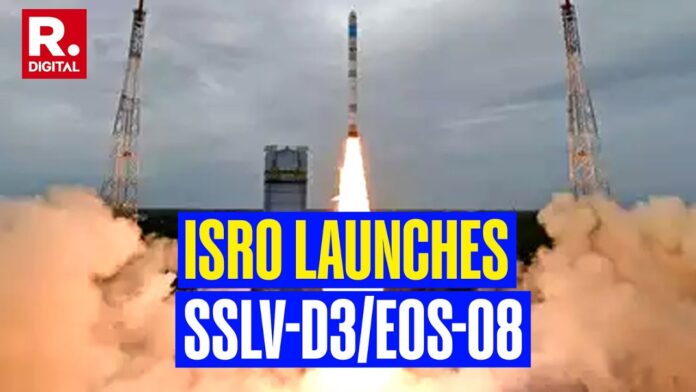The Indian Space Research Organisation (ISRO) achieves a milestone with the successful placement of the Earth Observation satellite EOS-08 into orbit, advancing its mission objectives and technological capabilities
On August 16, 2024, the Indian Space Research Organisation (ISRO) celebrated a significant achievement with the successful launch of the Earth Observation Satellite (EOS-08) and SR-O DEMOSAT satellites. The launch took place at precisely 9:17 a.m. from the first launch pad at the Satish Dhawan Space Centre, located approximately 135 kilometres east of Chennai.
This mission, designated as the third and final developmental flight of the Small Satellite Launch Vehicle (SSLV-D3), marks a pivotal moment in ISRO’s ongoing efforts to enhance its satellite deployment capabilities. The SSLV-D3 is designed to carry and deploy small satellites efficiently, and this launch underscores the agency’s progress in achieving its technological and exploratory objectives.
EOS-08, a microsatellite built on the Microsat/IMS-1 bus, is equipped with three advanced payloads: the Electro Optical Infrared Payload (EOIR), the Global Navigation Satellite System-Reflectometry payload (GNSS-R), and the SiC UV Dosimeter. Each of these payloads is tailored for specific applications:
- The EOIR payload is designed to capture high-resolution images in both the Mid-Wave Infrared (MIR) and Long-Wave Infrared (LWIR) bands. This capability allows for comprehensive satellite-based surveillance and monitoring of various phenomena, including environmental changes, disaster situations, fire incidents, and volcanic activities.
- The GNSS-R payload demonstrates the potential of GNSS-R-based remote sensing technologies. It is used for analyzing ocean surface winds, assessing soil moisture, studying cryosphere conditions over the Himalayan region, detecting floods, and monitoring inland water bodies.
- The SiC UV Dosimeter is a critical component for the Gaganyaan Mission. It monitors UV irradiance and serves as an alarm sensor for high doses of gamma radiation, contributing to the safety and success of India’s manned space mission.
The successful launch of these satellites signifies a major advancement in ISRO’s space capabilities and its commitment to expanding its observational and monitoring tools. This mission not only showcases the agency’s technological prowess but also supports its broader goals of enhancing Earth observation and space exploration.
Analysis:
Political:
The successful launch of EOS-08 reflects positively on India’s space policy and ISRO’s ability to execute complex missions. It reinforces the government’s focus on advancing space technology and achieving self-reliance in satellite deployment. Politically, this achievement enhances India’s standing as a space power and contributes to national pride, showcasing the government’s commitment to technological progress and innovation.
Social:
The launch of EOS-08 and its associated payloads has significant social implications. The enhanced satellite capabilities will aid in disaster monitoring, environmental protection, and public safety. The ability to capture high-resolution images and conduct remote sensing will support efforts in managing natural disasters, monitoring environmental changes, and improving overall public welfare. This advancement aligns with societal needs for better disaster preparedness and environmental stewardship.
Racial:
While the launch itself does not directly address racial issues, the benefits of advanced satellite technology are universally applicable. The ability to monitor environmental conditions and manage disasters can impact communities across different racial and ethnic groups, promoting equitable access to resources and information for all citizens.
Gender:
The launch of EOS-08 and its payloads contributes to gender equality indirectly by supporting broader social goals. By enhancing disaster monitoring and environmental protection, the mission helps create safer and more resilient communities, which benefits individuals regardless of gender. Furthermore, ISRO’s achievements in space technology can inspire young women to pursue careers in STEM fields, promoting gender diversity in science and engineering.
Economic:
The successful deployment of the EOS-08 satellite represents a boost to India’s space economy. It demonstrates the growing capability of ISRO to develop and launch advanced satellites, potentially attracting international partnerships and commercial opportunities. The ability to deploy small satellites efficiently can reduce costs for space missions and open up new avenues for economic growth in the space sector. Additionally, the technological advancements contribute to sectors such as disaster management, environmental monitoring, and infrastructure development, further stimulating economic activity.
